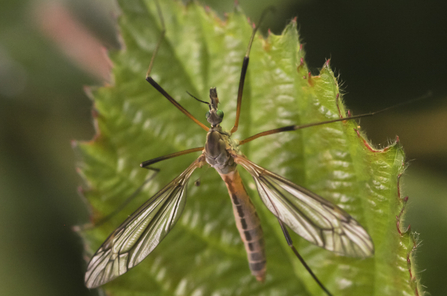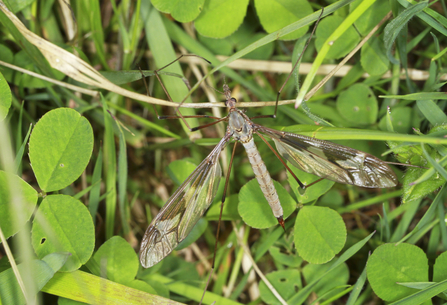You’ve probably seen a cranefly recently, though you might know them better as ‘daddy longlegs’. One look at their long, spindly legs and it’s easy to see how they got this nickname! Many of us encounter craneflies when they swarm over lawns and grasslands in late summer and autumn. This is the social event of the season as they look to find a mate, pair and lay their eggs.
Some of our most common craneflies lay their eggs in the soil. Their larvae are known as leatherjackets and they feed on grass roots. This very rarely causes any long-term harm to the grass. Leatherjackets spend up 11 months in the soil before emerging as adults, which will only fly for a couple of weeks before dying. The adults are often attracted to lights, which can sometimes lure them into houses. They’re completely harmless, so be kind and gently encourage them back out into your garden.
Apart from their long, gangly legs, craneflies can be recognised by their prominent 'drumsticks'. These stick out underneath each of their two wings, one on either side of the body. They are in fact modified hind wings, which are reduced to drumstick-like structures called halteres. These act as gyroscopes to maintain balance in flight. Craneflies are closely related to gnats and midges, which also have these halteres – but theirs are less prominent.



